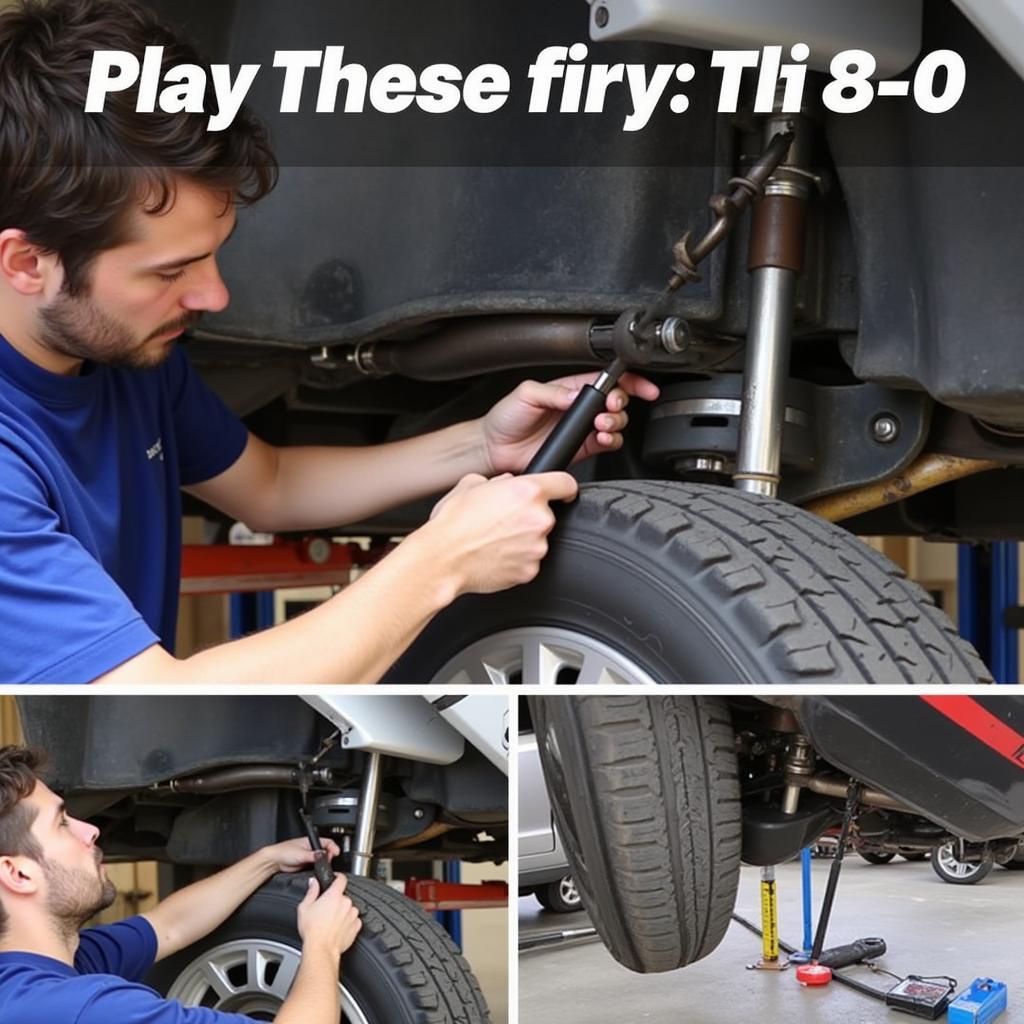Tie rod problems can significantly impact your car’s handling and safety. Understanding how to identify, diagnose, and address these issues is crucial for any car owner, mechanic, or automotive technician. This guide provides a detailed overview of tie rod problems, their causes, symptoms, and solutions.
Tie rods are critical components of your vehicle’s steering system, connecting the steering rack to the steering knuckles, which in turn rotate the wheels. A faulty tie rod can lead to a variety of driving issues, from a slight pull to the side to complete loss of steering control. It’s therefore essential to address tie rod problems promptly. For instance, some car problems in Los Angeles might be related to tie rod issues due to the city’s challenging road conditions. Learn more about these cars in Los Angeles problem.
What are Tie Rods and How Do They Work?
Tie rods are essentially steel rods with ball joints at each end. One end connects to the steering rack, while the other connects to the steering knuckle. As you turn the steering wheel, the steering rack moves, pushing or pulling the tie rods, which in turn cause the wheels to turn. This seemingly simple mechanism is fundamental to controlling your car’s direction.
Common Tie Rod Problems
Identifying Worn Tie Rod Ends
One of the most frequent tie rod problems is worn tie rod ends. The constant motion and stress on these components can lead to wear and tear over time. Symptoms of worn tie rod ends include:
- Clunking or knocking sounds: Especially when turning or driving over bumps.
- Uneven tire wear: Worn tie rod ends can cause the wheels to be misaligned, leading to premature and uneven tire wear.
- Steering wheel vibration: A vibrating steering wheel can be a sign of several problems, including worn tie rod ends.
- Loose steering: The steering may feel loose or unresponsive.
- Vehicle pulling to one side: If your car pulls to one side even when you’re trying to drive straight, it could be a sign of a tie rod problem.
 Worn Tie Rod End Symptoms
Worn Tie Rod End Symptoms
Bent or Damaged Tie Rods
While less common than worn ends, tie rods can also become bent or damaged due to impacts, such as hitting a curb or pothole. These issues will present similar symptoms to worn tie rod ends but can be more severe, potentially causing a complete loss of steering control. Addressing different car problems can be tricky, but understanding the basics can help.
How to Diagnose Tie Rod Problems in Cars
Diagnosing tie rod problems requires a systematic approach. Here’s a step-by-step guide:
- Visual Inspection: Look for signs of wear, damage, or looseness in the tie rods and their boots.
- Steering Wheel Test: With the engine off, grab the steering wheel and move it back and forth. Excessive play or clunking noises can indicate a problem.
- Jack Up the Car: Lift the front of the car and check for play in the tie rod ends by grabbing the tire and moving it inwards and outwards.
- Professional Inspection: If you’re unsure, it’s always best to have a qualified mechanic inspect the steering system.
 Mechanic Inspecting Tie Rod
Mechanic Inspecting Tie Rod
“Regular inspection of tie rods is crucial for preventative maintenance,” advises John Smith, Lead Mechanic at Smith Automotive. “Catching these problems early can save you money and ensure your safety on the road.”
How to Fix Tie Rod Problems
While some minor adjustments can be made, replacing a worn or damaged tie rod is typically the best course of action. This is a job best left to a qualified mechanic, as it requires specialized tools and knowledge of the steering system.
Tie Rod Replacement
Replacing a tie rod involves disconnecting the old tie rod from the steering knuckle and the steering rack and then installing the new tie rod. After replacement, a wheel alignment is necessary to ensure proper steering and tire wear. This process is essential to maintain proper handling and prevent future problems. Have you encountered any r funny car problems? Sometimes, seemingly minor issues can lead to more significant problems down the line.
 Replacing a Tie Rod
Replacing a Tie Rod
Preventing Tie Rod Problems
Regular maintenance and careful driving can help prevent tie rod problems. Avoid hitting curbs or potholes, and have your steering system inspected regularly as part of your routine car maintenance. “Preventive maintenance is always the best approach,” says Maria Garcia, Automotive Engineer at Garcia Auto Solutions. “Addressing small issues before they become major problems can save you time and money in the long run.” When renting a car, it’s important to be aware of potential Mexican car rentals problems, and ensuring the car’s steering system is in good condition is one of them.
Conclusion
Tie Rod Problems In Cars can range from minor annoyances to serious safety hazards. Understanding the symptoms, diagnosis, and solutions can empower you to address these issues promptly and maintain your vehicle’s safety and performance. Remember to schedule regular maintenance and address any signs of tie rod problems immediately. If you need assistance, don’t hesitate to connect with us at AutoTipPro. You can reach us at +1 (641) 206-8880 or visit our office at 500 N St Mary’s St, San Antonio, TX 78205, United States. We are here to help you keep your car on the road and running smoothly. Learning about what are mechanical problems in a car is a great way to stay informed and proactive about your vehicle’s health.





Leave a Reply